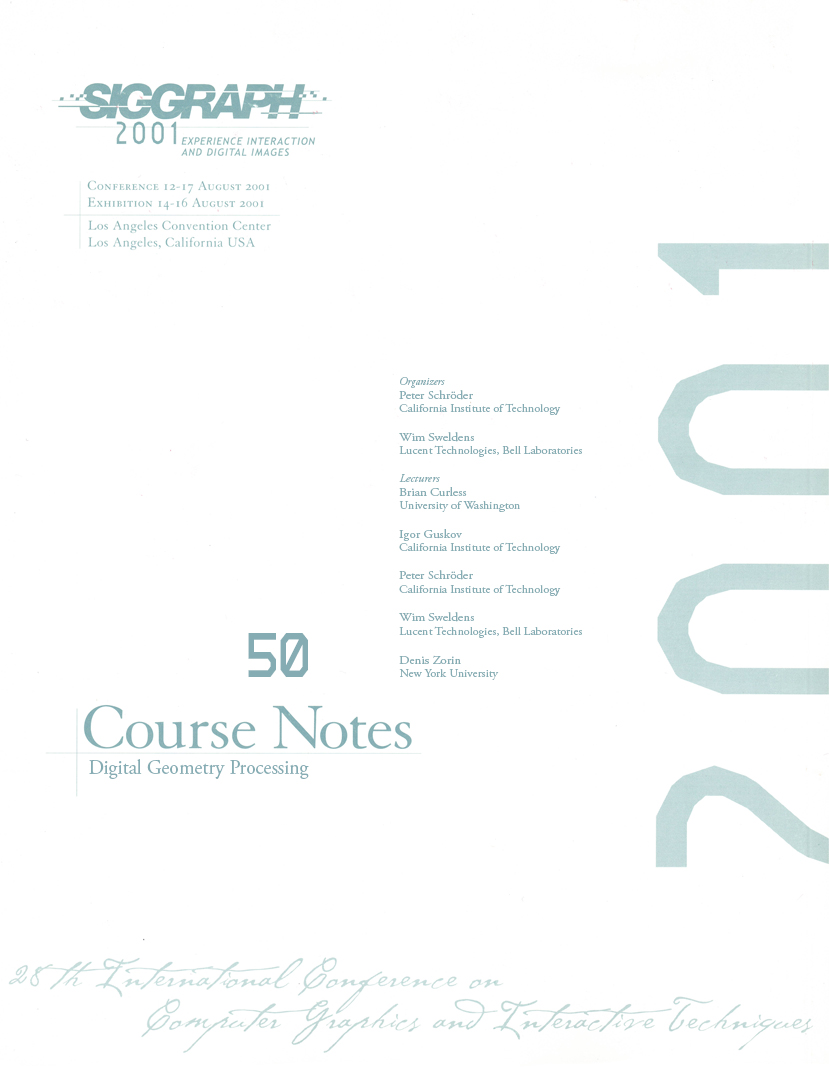“Digital Geometry Processing” by Schröder, Sweldens, Curless, Guskov and Zorin
Conference:
Type(s):
Title:
- Digital Geometry Processing
Organizer(s):
Presenter(s)/Author(s):
Entry Number: 50
Abstract:
Prerequisites
Familiarity with basic graphics algorithms. Some prior exposure to polygonal meshes.
Topics
3D acquisition: geometry reconstruction, denoising, appearance acquisition, multi-view integration. Semi-regular meshes: definition, properties, inherent advantages, construction, normal meshes, conversion from other formats. Subdivision and details as a natural replacement for classical Fourier analysis to arbitrary topology surfaces. Hierarchical editing: applications of digital geometry, processing algorithms in interactive modeling and physical simulation. Simulation: Use of multi-resolution geometry in physical modeling for animation, engineering design, and scientific computing. Compression: wavelets on semi-regular meshes, lifting, progressivity, zero-tree coding, quantization, rate-distortion trade-offs.
Description
Traditionally, fine-detail geometry is represented through unstructured polygonal meshes, which are awkward for editing, filtering, and compression applications. This course proposes a new paradigm based on semi-regular meshes constructed through a process of recursive quadrisection, which, according to recent research, has many advantages. Presenters show how to build semi-regular meshes from unstructured polygonal meshes and raw range data, and how to build applications such as filtering, editing, simulation, and compression using semi-regular meshes.





